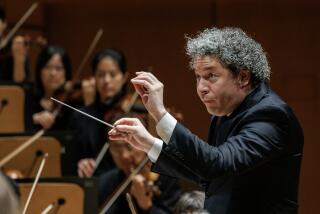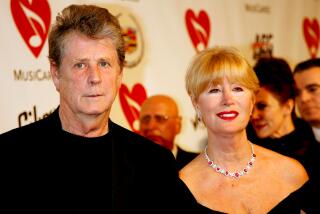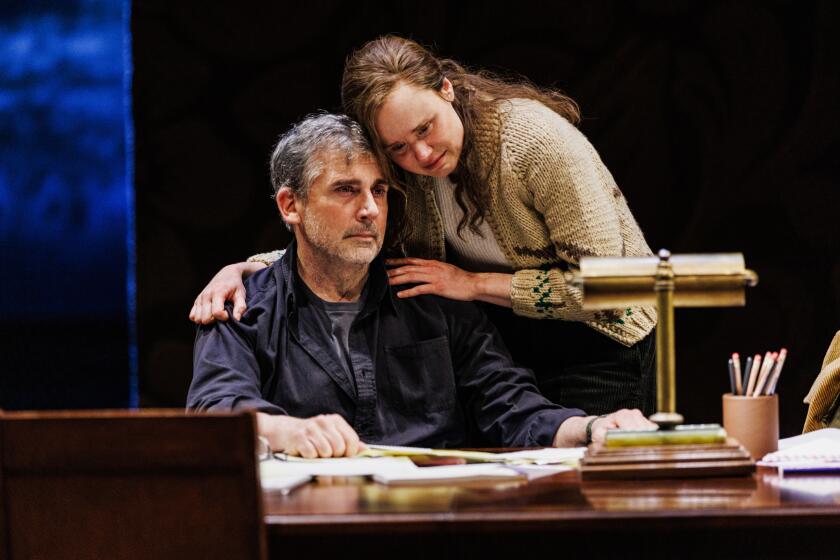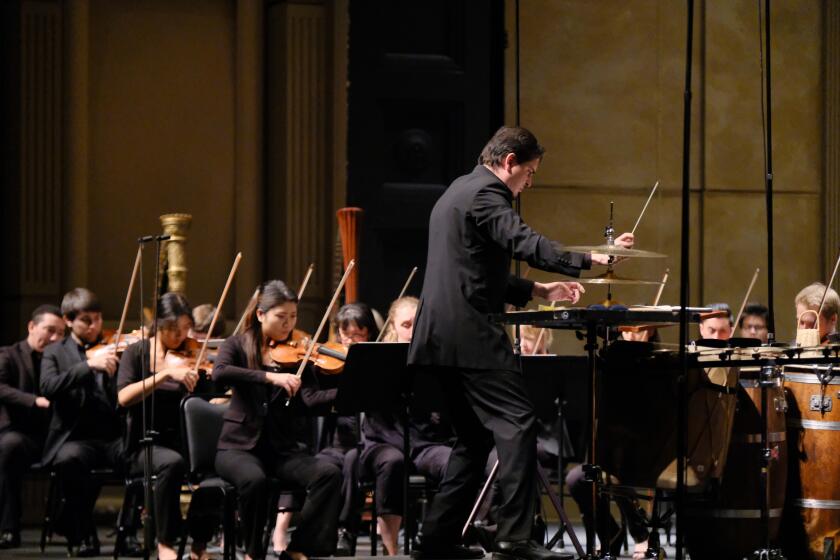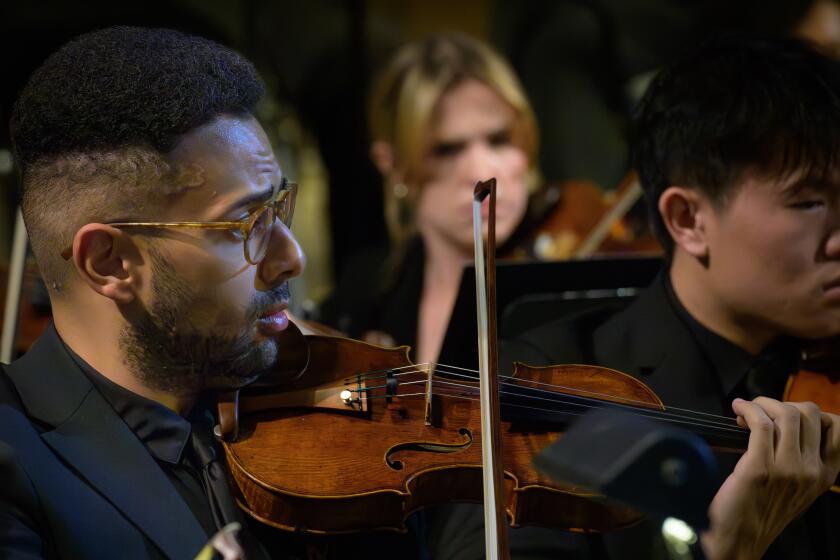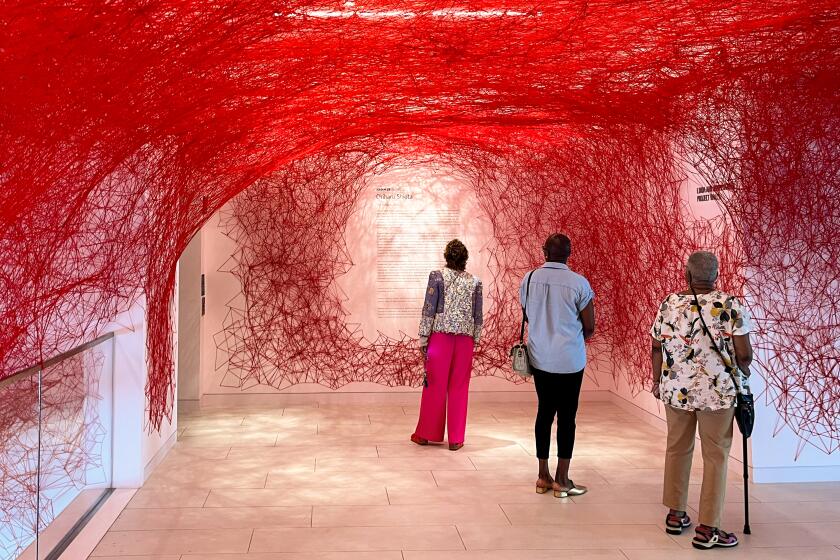Written in a Vivid Body Language
Paul Taylor’s very plausible candidacy as the greatest living choreographer rests not only on the number of acknowledged masterworks he has produced but also the way his breakthrough experiments have become the standard creative language of the art. The two programs danced by his company at the Alex Theatre in Glendale over the weekend offered examples galore of pioneer Taylor achievements that have been continually copied by lesser dance-makers until they form familiar contemporary subgenres.
Danced Sunday, “Piazzolla Caldera” (1997) belongs to Taylor’s apocalypse collection, especially his circles-of-hell repertory a la “Last Look.” Here the dancers move obsessively from one public sexual entanglement to another, scarcely noticing when the number or gender of their partners changes and never satisfied, never free of the compulsive, endless cruise. Gidon Kremer’s recordings of tango music by Astor Piazzolla and Jerzy Peterburshsky generate a dank energy--but this is no common tango ballet, not with Thomas Patrick and Richard Chen See drunkenly melting all over each other in one spectacular gymnastic duet. Or Patrick Corbin violently swinging Lisa Viola around his neck in another. The social-dance stances may be quasi-Argentine, but the muscular vocabulary remains staunchly North American.
Throughout, Taylor adroitly avoids showpiece terminations and the intrusive end-of-duet applause that usually punctuates such suites, cross-fading between sections to sustain tension, and bringing everyone back for a formal recapitulation that ends with one more statement of Francie Huber’s desperate loneliness. So much for modern romance.
Classical romance looked lots more enjoyable on the Sunday program as depicted in “Roses,” a rhapsodic 14-year-old ensemble piece still unsurpassed for its innovations in lyric gymnastics: dancers vaulting gracefully through the outstretched arms and legs of their partners or rolling together in whirlwind couplings across the floor, all perfectly matching the flow of Wagner’s “Siegfried Idyll.” In the final section, a new couple dances to music by Heinrich Baermann, focusing the previous group motifs in intricate partnering relationships that somehow look perfectly natural and utterly unprecedented. When Corbin supports Huber, for example, using an arm held behind his back, the position doesn’t seem as remarkable as any of the daring lifts in the duet--it’s simply another facet of the intimacy on view. But where have you ever seen anything like it before?
All-American romps to Baroque music by Taylor and his imitators have become something of a signature idiom--partly because such works suit the taste and technique of ballet companies. The Joffrey, for instance, danced Taylor’s freewheeling yet elegant “Arden Court” (1981) through much of its residency at the Music Center--but never with the refinement of the Saturday cast at the Alex. Using excerpts from William Boyce symphonies, Taylor here divides most every couple into a primary force and a follower who either watches awe-struck or dances in happy orbit around the central beloved. Male and female energies are thus juxtaposed and contrasted, with the women often skimming the stage and the men bounding across it.
Back in 1975, “Esplanade” represented the outer limits of both Taylor Baroque and experimental dance-without-steps: an ensemble showpiece to Bach violin concertos in which Taylor conjured up high drama and even higher virtuosity using everyday “found” movement. On Saturday, this milestone of postmodernism no longer seemed radical but still earned gasps for its running-jumping-sliding finale--American athleticism at its most youthful and generous.
Danced Saturday and Sunday, the brand-new “Oh, You Kid!” (co-commissioned by the Alex) turned out to be the weakest piece of the weekend: one of Taylor’s Americana pieces that mix dreamy nostalgia, character comedy and glimpses of cruel social realities with dances of a particular era. His “Company B” (recently performed by the Taylor 2 company in Eagle Rock) integrates these elements in a profound worldview; “Oh, You Kid!,” however, simply alternates them in a suite set to Paragon Ragtime Orchestra recordings of songs composed from 1905 to 1917. So we see a swoony duet for Silvia Nevijinsky and Andrew Asnes, followed by a farcical sequence suggesting silent-film outtakes--and then figures in Klan hoods, a familiar image in the ragtime era but one that Taylor uses as nothing more than a sardonic side-show.
Wearing black-and-white period beach wear by Santo Loquasto, the dancers help sustain and unify the piece, but this final 1999 engagement in the company’s first Southland residency held far more persuasive evidence of Taylor’s enduring genius.
More to Read
The biggest entertainment stories
Get our big stories about Hollywood, film, television, music, arts, culture and more right in your inbox as soon as they publish.
You may occasionally receive promotional content from the Los Angeles Times.

